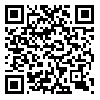Volume 19, Issue 5 (12-2020)
TB 2020, 19(5): 21-32 |
Back to browse issues page
Seyed saeed Mazloomy Mahmoodabad 

 , Sakineh Gerayllo *
, Sakineh Gerayllo * 

 , Mahdiyeh Khaleghi moori
, Mahdiyeh Khaleghi moori 

 , Nooshin Yoshany
, Nooshin Yoshany 

 , Nafiseh Mizani
, Nafiseh Mizani 




 , Sakineh Gerayllo *
, Sakineh Gerayllo * 

 , Mahdiyeh Khaleghi moori
, Mahdiyeh Khaleghi moori 

 , Nooshin Yoshany
, Nooshin Yoshany 

 , Nafiseh Mizani
, Nafiseh Mizani 


, gerayllo65@yahoo.com
Abstract: (1632 Views)
Introduction: Skin cancer is one of the most common cancers with an increasing global rate. In preventing this disease, the most basic measure is sun protection behaviors. Given the importance of health for medical students as health ambassadors, the aim of this study was to investigate the effect of extended parallel process model on the skin cancer preventive behaviors in Yazd students.
Methods: This descriptive-analytical study was conducted on 280 students of Yazd universities in 2019. The participants were selected using the random sampling method. A questionnaire based on the extended parallel processes model was used to collect the information. After entering SPSS 18 software, the data were analyzed using appropriate parametric statistical tests including independent t-test, analysis of variance, Pearson correlation, and linear regression at the significance level of 0.05.
Results: The participants’ mean age and standard deviation was 22.69±3.18 years within the range of 18 to 41 years. Among the participants, 62.5% were women. Application of hats and sunscreen was 15.7% and 30.9%, respectively. According to the findings, the perceived severity structural had the highest score among the model structures. Among the constructs of model, self-efficacy was the strongest predictor of behavioral intention (β = 0.376) and preventive behaviors of skin cancer (β = 0.109).
Conclusion: Due to the low level of protective behaviors and self-efficacy perceived construct, as the most effective factors on the preventive behaviors of skin cancer, it is recommended to consider educational interventions in this regard.
Methods: This descriptive-analytical study was conducted on 280 students of Yazd universities in 2019. The participants were selected using the random sampling method. A questionnaire based on the extended parallel processes model was used to collect the information. After entering SPSS 18 software, the data were analyzed using appropriate parametric statistical tests including independent t-test, analysis of variance, Pearson correlation, and linear regression at the significance level of 0.05.
Results: The participants’ mean age and standard deviation was 22.69±3.18 years within the range of 18 to 41 years. Among the participants, 62.5% were women. Application of hats and sunscreen was 15.7% and 30.9%, respectively. According to the findings, the perceived severity structural had the highest score among the model structures. Among the constructs of model, self-efficacy was the strongest predictor of behavioral intention (β = 0.376) and preventive behaviors of skin cancer (β = 0.109).
Conclusion: Due to the low level of protective behaviors and self-efficacy perceived construct, as the most effective factors on the preventive behaviors of skin cancer, it is recommended to consider educational interventions in this regard.
Type of Study: Applicable |
Subject:
Special
Received: 2020/07/14 | Accepted: 2020/09/21 | Published: 2021/01/20
Received: 2020/07/14 | Accepted: 2020/09/21 | Published: 2021/01/20
| Rights and permissions | |
 |
This work is licensed under a Creative Commons Attribution-NonCommercial 4.0 International License. |

